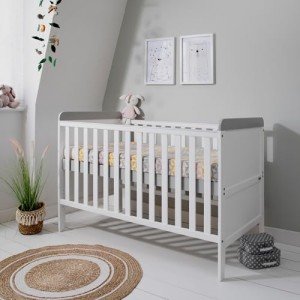Understanding Cot UK: A Comprehensive Guide for Parents
The world of parenting often involves browsing a maze of options, particularly when it pertains to baby sleeping plans. Among the many alternatives readily available in the UK, cots stick out as a standard, reputable choice. visit this website looks into whatever moms and dads need to understand about cots in the UK, detailing types, requirements, safety functions, and necessary maintenance ideas in a useful manner.
Table of Contents
- Intro to Cots in the UK
- Types of Cots
- Cradle
- Cot Bed
- Travel Cot
- Multifunctional Cots
- Important Safety Standards
- Picking the Right Cot
- Upkeep Tips
- Frequently asked questions
- Conclusion
1. Introduction to Cots in the UK
Cots are specially developed beds for infants, generally used up until they shift to a regular bed. They provide a safe and tight environment for babies to sleep, important for their growth and advancement. In the UK, consumer security requirements and guidelines make sure that cots meet specific requirements, offering peace of mind for moms and dads.
2. Kinds of Cots
Comprehending the different kinds of cots available can help parents make notified acquiring decisions. Here are some common types:
| Type | Description |
|---|---|
| Cradle | A small, rocking bed developed for babies, providing soothing movement for enhanced sleep. |
| Cot Bed | A convertible cot enabling extended usage. It can be changed into a toddler bed as the kid grows. |
| Travel Cot | A portable cot that is easy to set up and dismantle, perfect for on-the-go families. |
| Multifunctional Cots | Cots that include additional features, such as storage drawers or integrated changing tables. |
2.1 Cradle
Cradles are ideal for newborns due to their mild rocking motion. A lot of cradles have actually fixed sides and are low to the ground, making it simple for parents to access the baby.
2.2 Cot Bed
Cot beds provide flexibility, as they can be gotten used to larger sizes. This choice is best for families looking to invest in furniture that serves numerous purposes in time.
2.3 Travel Cot
Travel cots are hassle-free for households who frequently move or take a trip, offering a secure sleeping space far from home. They are designed to be lightweight and often come with bring bags.
2.4 Multifunctional Cots
These ingenious styles take full advantage of area and functionality, an attractive function for parents dealing with restricted room. They offer storage solutions that help keep nurseries arranged.
3. Important Safety Standards
Safety is vital when selecting a cot. The UK has actually carried out stringent policies to make sure infant security. Key safety includes to look for include:
- Slat Width: The distance in between slats must not go beyond 6.5 cm to avoid the baby from getting stuck.
- Sturdiness: The cot ought to be stable and durable, efficient in supporting a heavy mattress without collapsing.
- Non-toxic Materials: Cots ought to be made from non-toxic finishes, totally free from hazardous chemicals.
- Height Adjustability: Cots with adjustable mattress heights permit moms and dads to decrease the bed mattress as the baby grows and begins to press up.
4. Selecting the Right Cot
When it pertains to selecting the ideal cot, numerous elements must be considered:
- Budget: Determine how much you're prepared to spend. Bear in mind that costs can vary significantly.
- Area: Measure the area where the cot will be positioned to ensure a proper fit.
- Design: Consider the nursery theme. Cots come in different designs, materials, and colors.
- Functionality: Assess whether you desire a multifunctional cot or a basic, standalone design.
5. Maintenance Tips
Keeping a cot is necessary for ensuring its durability and the security of the kid. Here are a number of tips to remember:
- Regular Checks: Routinely inspect the cot for loose screws, slats, or any wear and tear.
- Cleaning up: Wipe down surfaces with mild, non-toxic cleaners to keep the cot hygienic.
- Bed mattress Care: Use waterproof covers on bed mattress and frequently inspect for odors or mold.
- Storage: If not in usage, save the cot in a dry, temperate location to prevent mildew and damage.
6. Frequently asked questions
Q1: What age should a baby shift from a cot to a bed?
Many kids shift from a cot to a bed in between the ages of 2 to 3 years. However, it varies depending on the child's advancement and readiness.
Q2: Are second-hand cots safe to utilize?
Pre-owned cots can be safe as long as they fulfill existing safety requirements and are in excellent condition. Always look for recalls and adverse reports on utilized cots before acquiring.
Q3: How do I guarantee my baby sleeps safely in a cot?
To promote safe sleep, place the baby on their back to sleep, eliminate bed linen and plush toys, and make sure the bed mattress fits comfortably within the cot.
Q4: What should I try to find in a cot mattress?
Search for a company, flat mattress that fits comfortably in the cot, guaranteeing an even surface for the baby's sleep. It's likewise vital to check for non-toxic products.
7. Conclusion
Picking the right cot is one of the most essential choices a parent can make for their baby's rest and security. With various alternatives readily available, understanding the types, security requirements, and upkeep requirements can aid in making an informed choice. Prioritizing safety, convenience, and functionality will help guarantee that both parents and babies can experience relaxing nights and happy days ahead. Whether going with a cozy cradle, a convertible cot bed, or a travel cot for family adventures, the right option will offer a nurturing sleeping environment for every youngster.

